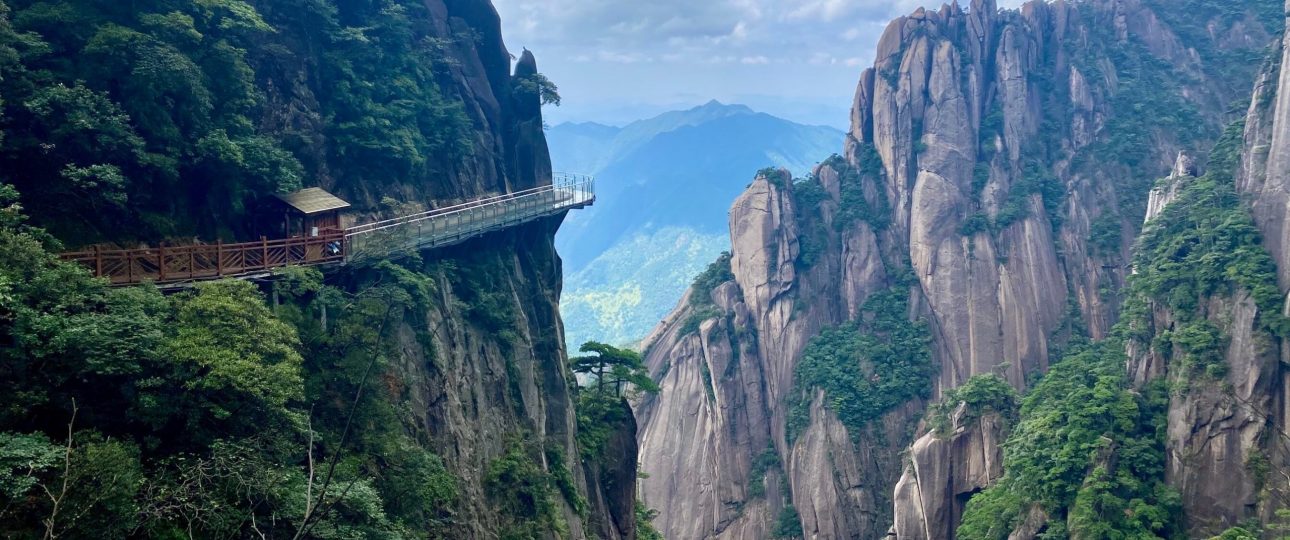Introduction
Welcome to this detailed travel guide to Mount Sanqing, a remarkable destination in China. As an experienced traveler, I have explored many fascinating places, and Mount Sanqing stands out for its natural beauty and cultural significance. In this guide, you’ll find essential information to help you plan an unforgettable visit to this unique mountain range.
Overview of Mount Sanqing
Mount Sanqing, or Sanqingshan, is located in the northeastern part of Jiangxi Province, China. Recognized as a UNESCO World Heritage Site, this granite mountain range is known for its stunning landscapes, ancient Taoist temples, and rich biodiversity. The name “Sanqing” refers to the three main peaks, which are said to resemble three Taoist deities: Yujing, Yuxu, and Yuhua. The mountain’s dramatic geological formations, lush forests, and frequent mists create an enchanting atmosphere.
What Makes Mount Sanqing Special
Mount Sanqing offers a unique blend of natural wonders and cultural heritage. Here are some highlights:
- Ancient Taoist Temples: The mountain is home to several Taoist temples, some dating back to the Tang Dynasty. These temples are not only spiritual centers but also showcase intricate architectural designs.
- Rich Biodiversity: The area is a biodiversity hotspot, with over 2,300 plant species and 400 vertebrate species. The park is home to rare plants and endangered animals, including the critically endangered Blue-crowned laughingthrush.
- Mystical Atmosphere: The mountain’s unique geography often results in mystical clouds and mists, offering breathtaking views and a serene environment.
- Scenic Hiking Trails: The mountain features a variety of hiking trails, ranging from easy walks to challenging climbs, allowing visitors to explore dense forests, waterfalls, and panoramic viewpoints.
Best Time to Visit
The ideal time to visit Mount Sanqing is during the spring and autumn months, from April to June and September to November. During these periods, the weather is mild, and the landscape is vibrant with blooming flowers or colorful foliage. However, the weather can be unpredictable, so checking the forecast before your trip is advisable.
How to Get There
Reaching Mount Sanqing requires some planning, but several transportation options are available:
By Air:
The nearest airport is Jingdezhen Luojia Airport, about 80 kilometers away. From there, you can take a taxi or a shuttle service to the mountain. Alternatively, Nanchang Changbei International Airport is about 300 kilometers away, with bus or train connections to Mount Sanqing.
By Train:
Shangrao Railway Station is the closest train station to Mount Sanqing. From major cities like Shanghai or Beijing, the train journey to Shangrao takes approximately 4-6 hours. From the station, you can hire a taxi or take a bus to the mountain.
By Bus:
Direct bus services are available from nearby cities to Mount Sanqing. While this option may take longer, it can be more affordable. Check local bus schedules for the most convenient routes.
Local Transportation
Once at Mount Sanqing, several transportation options are available to explore the area:
- Cable Car: A cable car system provides access to higher elevations, ideal for those with limited mobility or who wish to save time.
- Hiking: Hiking is the best way to experience the mountain’s natural beauty. Trails are well-marked, but be sure to wear comfortable shoes and carry water.
- Shuttle Buses: Shuttle buses operate within the mountain area, offering convenient access to various scenic spots and temples.
Accommodation Options
Visitors to Mount Sanqing have several accommodation choices:
- Hotels and Resorts: Near the mountain entrance, you’ll find a range of hotels and resorts, from budget-friendly to luxurious options.
- Guesthouses and Homestays: For a more immersive experience, consider staying in a guesthouse or homestay to engage with local culture.
- Camping: Outdoor enthusiasts can camp at designated sites around the mountain, but be sure to check local regulations and obtain necessary permits.
Summary of Facts
Here are the key facts about Mount Sanqing:
- Located in northeastern Jiangxi Province, China.
- A UNESCO World Heritage Site.
- Features ancient Taoist temples, rich biodiversity, mystical clouds, and scenic hiking trails.
- Best visited during spring and autumn (April to June and September to November).
- Accessible by air, train, or bus.
- Local transportation includes cable cars, hiking, and shuttle buses.
- Accommodation options include hotels, guesthouses, and camping.
With this information, you’re ready to plan your trip to Mount Sanqing. Prepare to be captivated by its natural beauty, explore its ancient temples, and create lasting memories in this enchanting destination. Safe travels!




